Table of Contents
Is your cat a little *too* enthusiastic during playtime? Do those playful swats sometimes feel more like full-on assaults? You're not alone! Many cat owners struggle with feline aggression, especially during play. But before you resign yourself to a life of wearing protective gear, know this: the right toys can make a world of difference. Choosing the best toys for aggressive cats isn't just about protecting your hands and ankles; it's about understanding your cat's natural instincts and providing healthy outlets for their energy. This article dives deep into the world of feline play aggression, exploring why it happens and, more importantly, how to redirect it with the perfect toy. We'll cover everything from interactive puzzles to DIY projects, ensuring your cat stays entertained and your relationship stays harmonious. Get ready to transform playtime from a battleground into a bonding experience!
Understanding Aggression in Cats: Why Playtime Matters
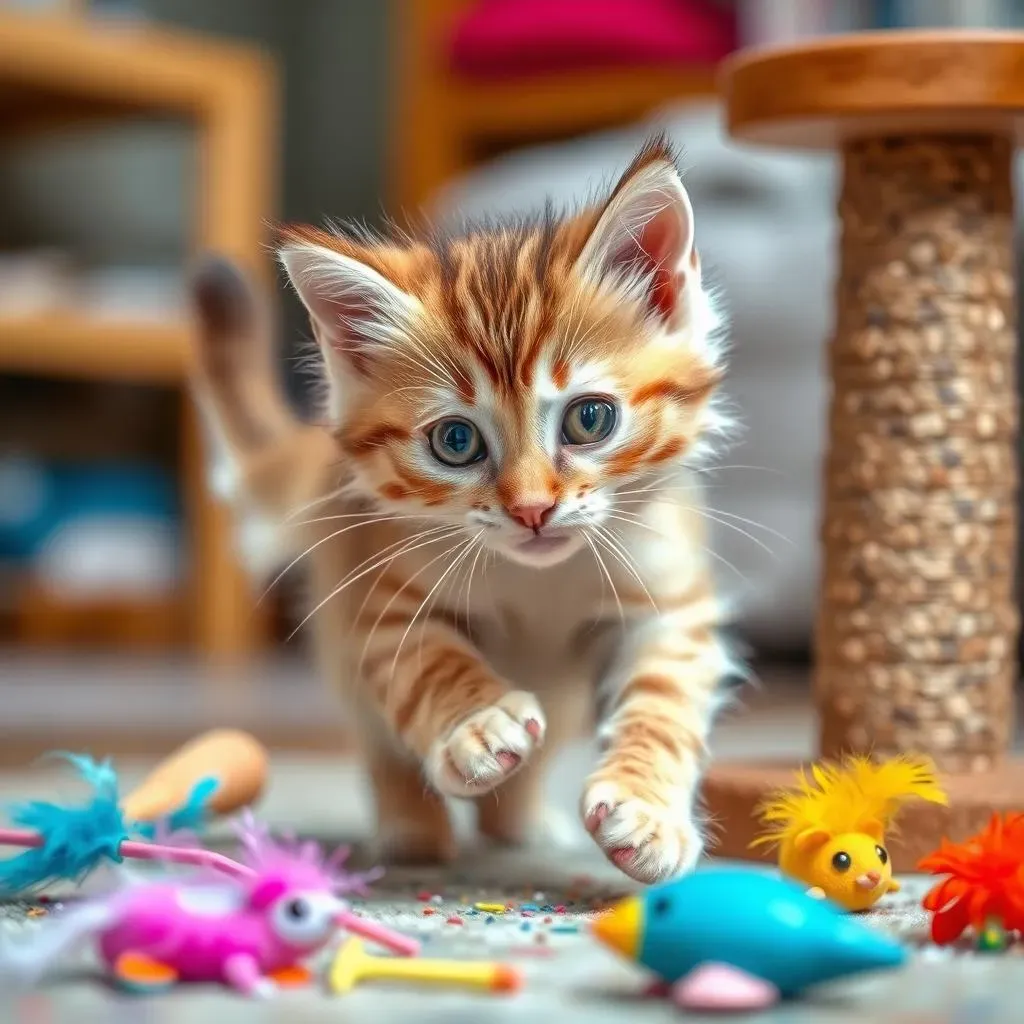
Understanding Aggression in Cats: Why Playtime Matters
The Hunter Within: Decoding Feline Instincts
Let's get one thing straight: that "aggressive" behavior isn't your cat being a jerk. It's usually pent-up energy and unfulfilled hunting instincts screaming to get out. Think about it – in the wild, cats spend a huge chunk of their day stalking, chasing, and pouncing. Our domesticated felines still have those instincts, but often lack the appropriate outlets. So, when your cat ambushes your feet or attacks a dangling string with the ferocity of a tiger, they're just doing what comes naturally. The key is understanding this inherent need and finding ways to channel it positively.
Indoor cats, especially, are prone to this kind of "play aggression" simply because they're bored. They don't have the same environmental stimulation as their outdoor counterparts – no trees to climb, no mice to hunt, no interesting smells to investigate. This can lead to frustration and a build-up of energy that gets misdirected towards you, your furniture, or anything else that moves. Providing adequate playtime is crucial, not just for their physical health, but also for their mental well-being. A tired cat is a happy cat, and a happy cat is less likely to unleash their inner predator on your ankles.
The Boredom Factor: Recognizing the Signs
So how do you know if your cat's "aggression" is really just boredom in disguise? Look for the telltale signs. Is your cat constantly seeking attention, even when you're busy? Do they seem restless or agitated, pacing around the house or meowing excessively? Are they destructive, scratching furniture or knocking things off shelves? These can all be indicators that your cat isn't getting enough mental and physical stimulation. Another key sign is the timing of the "attacks." Do they tend to happen at dawn or dusk, when cats are naturally more active? This suggests their hunting instincts are kicking in and they need a way to burn off that energy.
It's also important to rule out any underlying medical conditions that could be contributing to the behavior. Pain or discomfort can sometimes manifest as aggression, so a vet visit is always a good idea to ensure there's no physical cause. Once you've confirmed that your cat is healthy and the aggression is likely behavioral, you can start focusing on enrichment and playtime strategies. Remember, addressing the root cause of the problem – boredom and unfulfilled instincts – is the most effective way to curb those unwanted behaviors.
Sign | Possible Cause | Solution |
|---|---|---|
Excessive meowing | Boredom, attention-seeking | More playtime, interactive toys |
Destructive behavior | Lack of stimulation, pent-up energy | Scratching posts, climbing structures, puzzle feeders |
Attacks at dawn/dusk | Natural hunting instincts | Playtime session before bed |
Top 5 Best Toys for Aggressive Cats: A Buyer's Guide
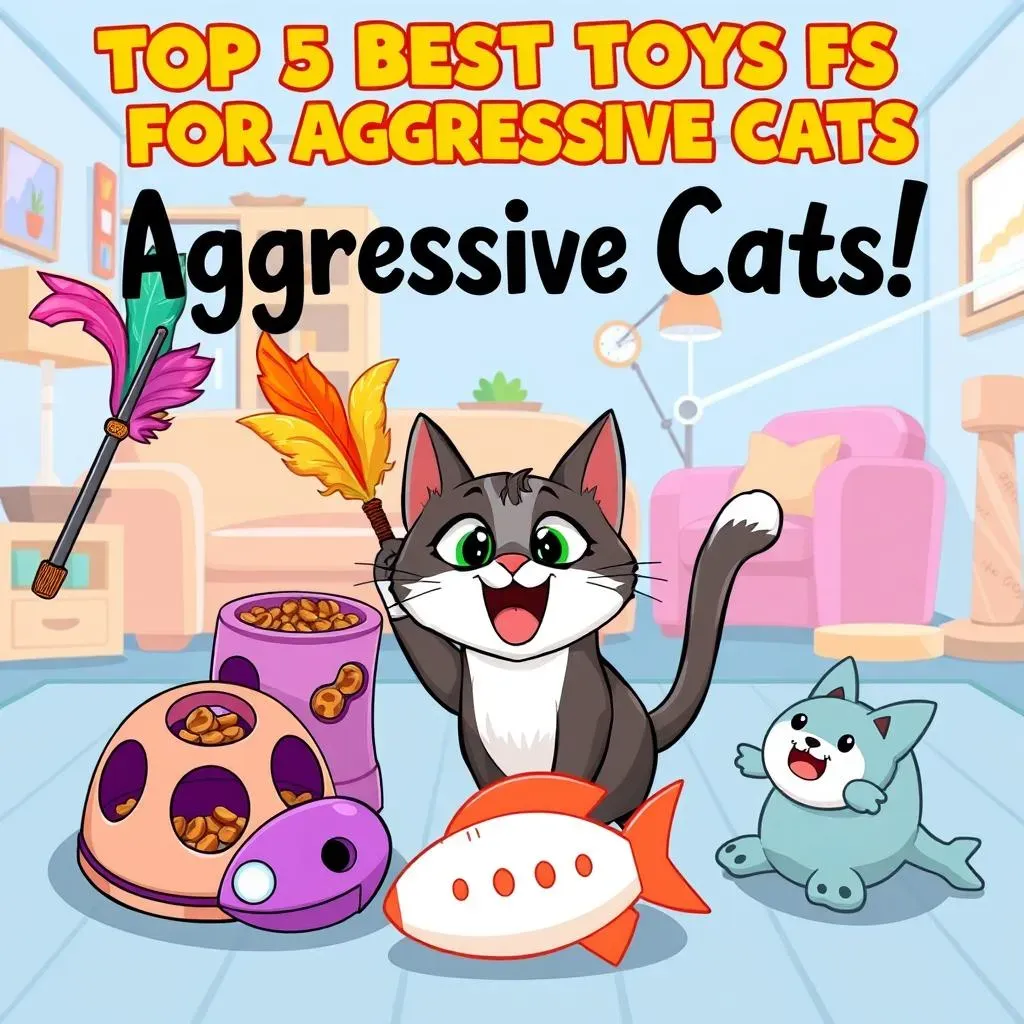
Top 5 Best Toys for Aggressive Cats: A Buyer's Guide
Interactive Wands: The Ultimate Chase
If you want to unleash your cat's inner predator, interactive wands are where it's at. These aren't your grandma's feather dusters – we're talking about wands with enticing attachments like feathers, ribbons, or even realistic-looking "prey" animals. The key here is movement. Drag the wand along the floor, make it dart and weave, and let your cat stalk, chase, and pounce to their heart's content. This mimics the natural hunting sequence and provides a fantastic physical and mental workout. Pro tip: vary the speed and movement to keep things interesting. Sometimes slow and deliberate, sometimes fast and erratic – just like real prey!
When choosing an interactive wand, look for one that's durable and has a comfortable grip. You'll be doing a lot of waving, so you want something that won't tire you out. Also, consider the attachments. Some cats prefer feathers, while others go crazy for crinkly ribbons or plush mice. Experiment to see what gets your cat's attention the most. And always supervise playtime with wands – you don't want your cat swallowing any small parts.
Puzzle Feeders: Brains and Brawn
Who says playtime can't be educational? Puzzle feeders are a brilliant way to engage your cat's mind while they eat. These toys require your cat to solve a puzzle to access their food, stimulating their problem-solving skills and slowing down their eating. This is especially beneficial for aggressive cats, as it provides mental stimulation that can help reduce boredom and frustration. There are tons of different puzzle feeders on the market, from simple treat balls to complex mazes. Start with something easy and gradually increase the difficulty as your cat gets the hang of it.
Not only do puzzle feeders keep your cat entertained, but they also have health benefits. By slowing down their eating, they can help prevent overeating and digestive issues. Plus, the mental stimulation can help reduce anxiety and stress. It's a win-win! When introducing a puzzle feeder, be patient and encouraging. Show your cat how it works and reward them with praise and treats when they succeed. Soon, they'll be hooked on the challenge.
Toy Type | Benefits for Aggressive Cats | Things to Consider |
|---|---|---|
Interactive Wands | Channels hunting instincts, provides physical exercise | Durability, attachment variety, supervision required |
Puzzle Feeders | Mental stimulation, slows down eating, reduces boredom | Difficulty level, cat's personality, patience required |
Kicker Toys: Bunny Kicks and Cuddles
Kicker toys are long, plush toys that cats can grab with their front paws and kick with their hind legs – hence the name. This "bunny kick" is a natural behavior that cats use to subdue prey, and kicker toys provide a safe and appropriate outlet for this instinct. They're especially great for cats who tend to get aggressive during play, as they allow them to release their energy without scratching or biting you. Look for kicker toys that are made from durable materials and filled with catnip or other enticing scents. The size is important, too – it should be long enough for your cat to comfortably grab and kick.
Interactive Toys to Curb Aggression: Engage and Redirect
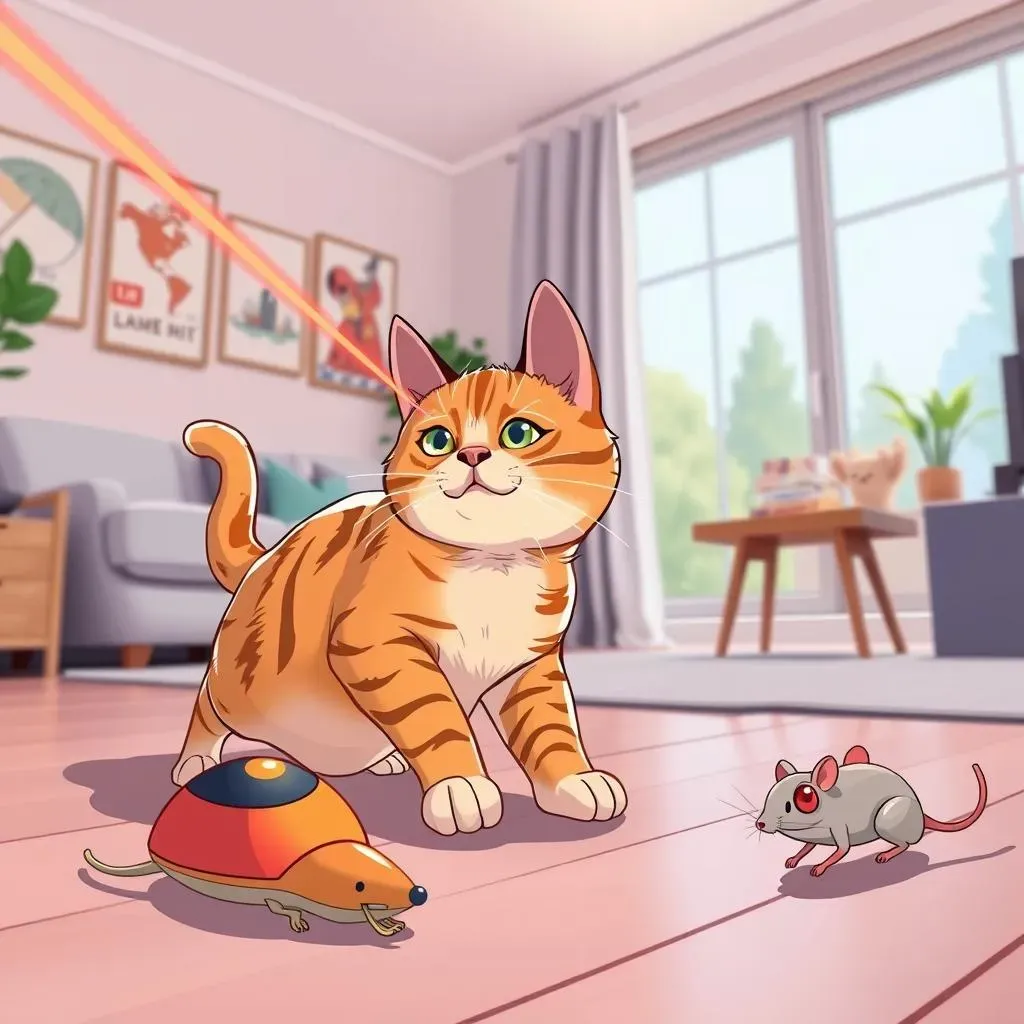
Interactive Toys to Curb Aggression: Engage and Redirect
Laser Pointers: A Controversial Choice
let's talk laser pointers. They're undeniably effective at getting a cat's attention, triggering that chase instinct like nothing else. That little red dot zipping around the room? Pure catnip for the eyes! However, laser pointers are a bit of a controversial topic in the cat world, and for good reason. The problem is, cats never actually "catch" the laser. This can lead to frustration and anxiety, as their hunting sequence is never completed. Imagine the agony of the perpetual near-miss! For some cats, this can actually *increase* aggressive behaviors, as they become obsessed with the elusive red dot.
If you do choose to use a laser pointer, it's crucial to end the play session on a positive note. Always finish by directing the laser onto a physical toy that your cat can actually catch and "kill." This completes the hunting sequence and provides a sense of satisfaction. Think of it like this: the laser gets them excited and engaged, but the physical toy provides the ultimate reward. Also, be mindful of where you're pointing the laser – never shine it directly into your cat's eyes (or anyone else's, for that matter!). Used responsibly, a laser pointer can be a fun and engaging toy, but it's definitely not a one-size-fits-all solution.
Automated Toys: When You Can't Be There
Let's face it, sometimes you just can't be there to entertain your cat. Work, errands, Netflix binges – life gets in the way. That's where automated toys come in handy. These are battery-operated or electric toys that move and interact with your cat even when you're not around. Think of them as robotic playmates! There are tons of options available, from self-rotating laser pointers to battery-powered mice that scurry around the floor. The key is to find one that your cat finds engaging and that provides a safe and stimulating play experience.
When choosing an automated toy, consider your cat's personality and play style. Some cats are easily entertained by simple movements, while others need something more challenging. Look for toys with adjustable speeds and patterns to keep things interesting. Also, make sure the toy is made from durable, non-toxic materials and that it's safe for your cat to play with unsupervised. While automated toys are a great way to keep your cat entertained when you're not around, they shouldn't replace interactive playtime with you. Nothing beats the bond you can build through shared play!
Toy Type | Pros | Cons | Considerations |
|---|---|---|---|
Laser Pointers | Highly engaging, triggers chase instinct | Can cause frustration, potential for eye injury | Always end with a physical "catch," use responsibly |
Automated Toys | Provides entertainment when you're away, varied options | Can be expensive, may not engage all cats | Durability, safety, adjustability |
DIY Toys for Aggressive Cats: BudgetFriendly Fun
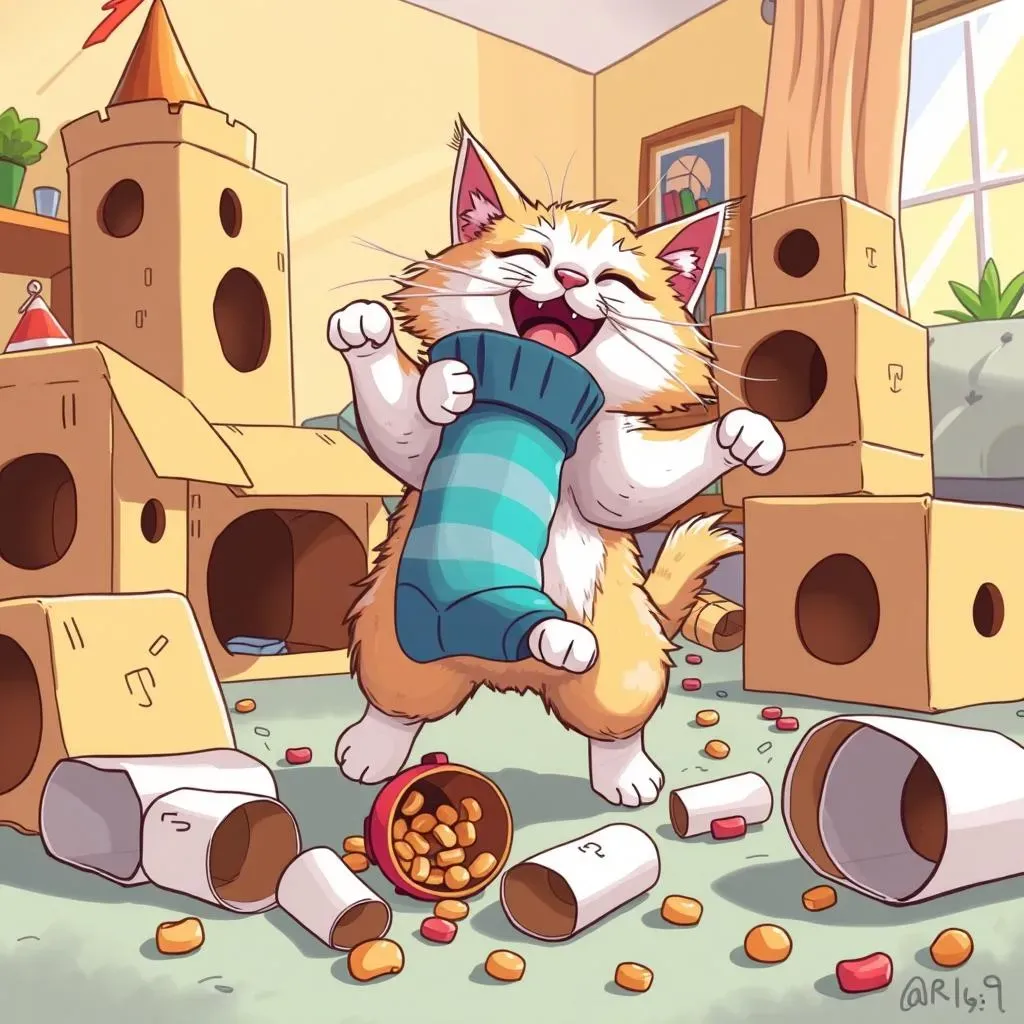
DIY Toys for Aggressive Cats: BudgetFriendly Fun
Sock It to 'Em: The Ultimate Kicker Toy
Seriously, who doesn't have a lone sock lurking in the laundry abyss? Turn that orphaned sock into a kick-tastic toy! Just stuff it with catnip (crucial!), some crinkled-up paper or plastic bags for extra auditory stimulation, and tie off the end securely. Boom! Instant kicker toy that your cat can bunny-kick to their heart's content. You can even sew on some extra fabric scraps or ribbons for added visual interest. The best part? It costs practically nothing and repurposes something you were probably going to throw away anyway. Talk about a win-win!
For extra durability, use a thicker sock material, like a wool sock or even an old tube sock. You can also reinforce the seams with some basic stitching. And if you're feeling crafty, try adding some embroidery or fabric paint to personalize the toy. Just make sure any embellishments are securely attached and non-toxic. Remember, safety first! This simple sock toy is a great way to provide your aggressive cat with a safe and satisfying outlet for their kicking and biting instincts.
Cardboard Creations: Boxes and Beyond
Cats and cardboard boxes – it's a love story for the ages. But instead of just letting your cat commandeer your Amazon deliveries, why not create some custom cardboard creations? Cut holes in a box to make a simple puzzle toy where they have to fish out treats. Build a multi-level cardboard castle for climbing and exploring. Or simply leave a few empty boxes lying around for them to hide in and ambush unsuspecting "prey" (aka, your ankles). The possibilities are endless, and the cost is next to nothing. Plus, cardboard is a great material for scratching, so you're essentially providing a toy and a scratching post in one!
To make your cardboard creations even more engaging, try adding some catnip or crinkled paper inside. You can also use non-toxic glue to attach different boxes together or to create ramps and tunnels. Just be sure to remove any staples or tape that could be harmful to your cat. And don't be afraid to get creative! Let your imagination run wild and see what kind of cardboard contraptions you can come up with. Your cat will thank you for it!
DIY Toy | Materials | Benefits |
|---|---|---|
Sock Kicker | Old sock, catnip, crinkle material | Durable, affordable, satisfies kicking instinct |
Cardboard Box Puzzle | Cardboard box, treats, scissors | Mental stimulation, encourages hunting behavior |
Toilet Paper Roll Treats: Simple and Satisfying
Don't toss those empty toilet paper rolls! They're a goldmine for DIY cat toys. Simply fold in one end to close it off, fill it with some dry food or treats, and fold in the other end. Now your cat has to bat, roll, and chew the tube to get the goodies out. It's a super simple puzzle toy that provides both mental and physical stimulation. For an added challenge, cut some small holes in the tube to make it even harder to access the treats. Just be sure to supervise your cat while they're playing with this toy, as they may try to eat the cardboard.
You can also get creative with decorating the toilet paper rolls. Use non-toxic markers or paint to add some colorful designs or patterns. Or glue on some feathers or ribbons for added visual appeal. Just make sure any decorations are securely attached and won't come off and be ingested by your cat. This is a great way to recycle those empty toilet paper rolls and provide your aggressive cat with a fun and engaging toy that won't break the bank.
Creating a Safe Play Environment for Your Aggressive Cat
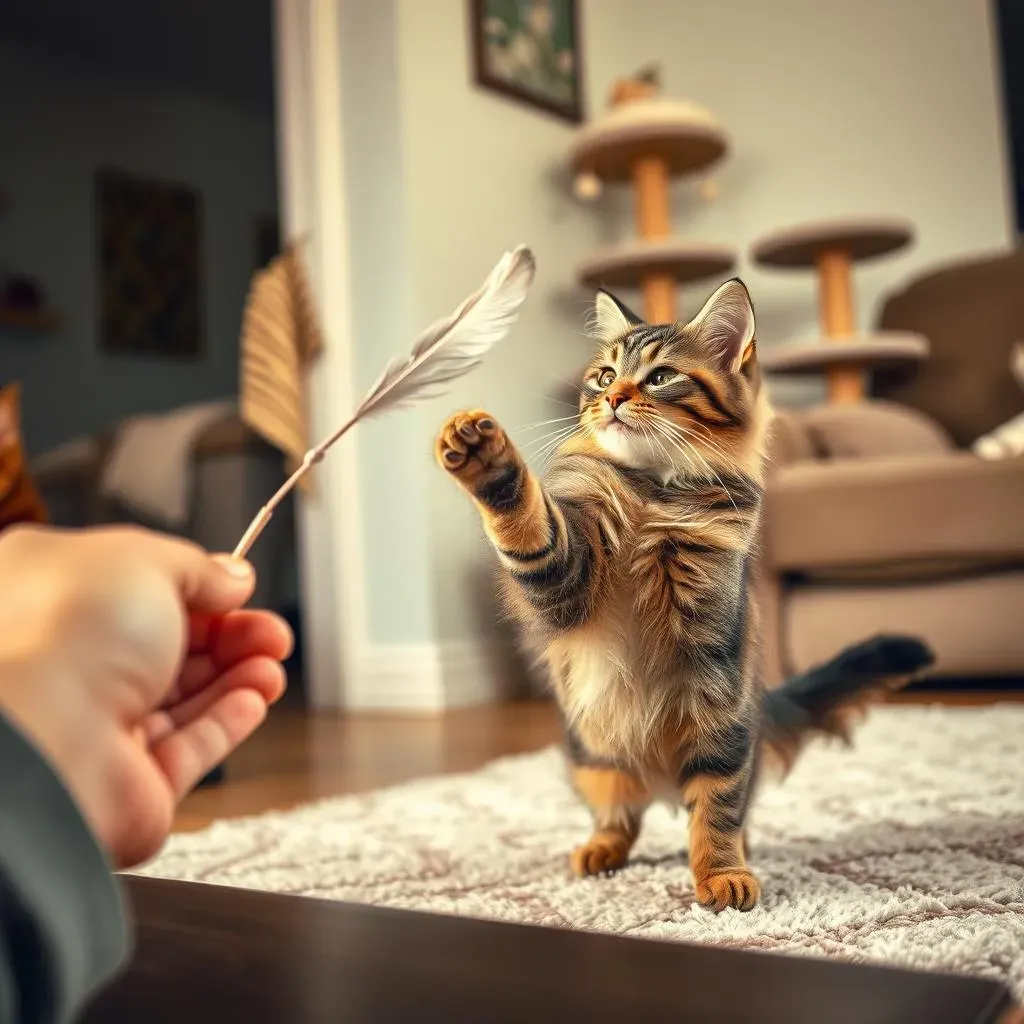
Creating a Safe Play Environment for Your Aggressive Cat
Safe Zones and Retreat Areas
so you've got the toys, you're ready to play, but hold up! Before you unleash the feline fury, let's talk about creating a safe play environment. This is crucial, especially for aggressive cats. Think of it as setting the stage for success. First and foremost, your cat needs a safe zone – a place where they can retreat to if they feel overwhelmed or overstimulated. This could be a cat tree, a cozy bed, or even just a quiet corner of the room. The key is that it's their space, and they know they can go there to de-stress.
Also, consider the overall layout of your play area. Make sure there are no hazards that could cause injury, like sharp edges, loose wires, or toxic plants. And be mindful of slippery surfaces – a cat zooming after a toy can easily lose their footing and crash into something. Rugs or carpets can provide better traction. Remember, the goal is to create an environment where your cat feels comfortable and secure, so they can focus on having fun and burning off that energy without getting hurt.
Supervised Playtime: Knowing When to Stop
Supervision is key when playing with an aggressive cat. You need to be able to recognize the signs that they're getting overstimulated and know when to stop the game. These signs can include dilated pupils, flattened ears, a twitching tail, or hissing and growling. If you see any of these, it's time to back off and give your cat some space. Continuing to play when they're already agitated can lead to biting and scratching, and it can also damage your relationship with your cat.
It's also important to avoid using your hands or feet as toys. This can teach your cat that it's okay to attack your extremities, which is definitely not what you want! Instead, always use a toy as a buffer between you and your cat. And if they do accidentally bite or scratch you, don't react with anger or punishment. This will only make them more fearful and defensive. Instead, calmly disengage and walk away. Consistency is key here – you want to teach your cat that aggressive behavior results in the end of playtime.
Do | Don't |
|---|---|
Provide a safe retreat | Use hands or feet as toys |
Supervise playtime | Punish aggressive behavior |
Recognize signs of overstimulation | Continue playing when cat is agitated |
Positive Reinforcement: Rewarding Good Behavior
Positive reinforcement is a powerful tool for shaping your cat's behavior. When they play appropriately – chasing, pouncing, and kicking the toy without biting or scratching you – reward them with praise, treats, or petting (if they enjoy it). This will reinforce the idea that good behavior leads to positive outcomes. You can also use a clicker to mark the desired behavior, followed by a reward. This creates a clear association between the click and the positive reinforcement.
Avoid using punishment or negative reinforcement, as this can create fear and anxiety and damage your relationship with your cat. Instead, focus on rewarding the behaviors you want to see more of. With patience and consistency, you can teach your cat to play in a safe and appropriate way, making playtime a fun and enjoyable experience for both of you.
Finding the Purr-fect Solution for Your Aggressive Cat
Dealing with an aggressive cat can be frustrating, but remember, it's often rooted in natural instincts and pent-up energy. By understanding your cat's triggers and providing the right outlets through engaging toys and a safe play environment, you can significantly reduce unwanted behaviors. Experiment with different types of toys, rotate them regularly to maintain interest, and don't underestimate the power of interactive play. Ultimately, the goal is to create a stimulating and enriching environment where your cat can express their natural hunting instincts in a safe and appropriate way, strengthening your bond and ensuring a happier, more harmonious home for both of you. So, go ahead, find those best toys for aggressive cats, and watch your feline friend transform into a playful, well-adjusted companion.